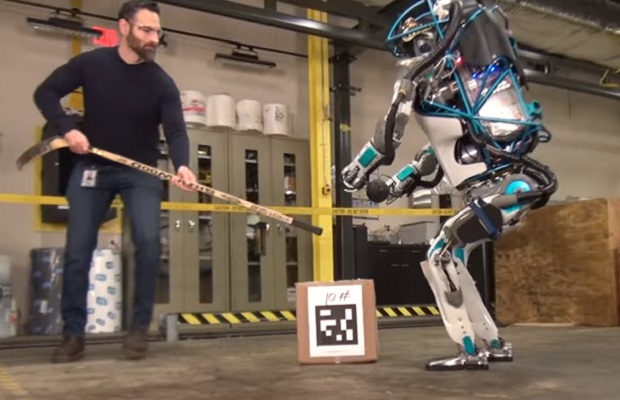Google has unveiled the next generation of its Atlas, its bipedal robot capable of carring 10lb boxes and stoically picking itself up after being toppled by a hockey stick.
The model created by Boston Dynamics, a division of Alphabet, works indoors and is designed for ‘ mobile manipulation’- transporting objects from one place to another.
Its movements are almost eerily humanlike, which is indicative of the breakthrough Atlas may represent for robotics.
The electric and hydraulically operated Atlas stands at 5 feet 9 inches tall and weighs 180 lbs.
Atlas is designed to avoid obstacles and handle objects thanks to sensors in its body and legs and LIDAR and special stereo sensors in its head.
This means the robot can assess and respond to challenging terrain, such as hills, steps, moving objects and being toppled over.
Like previous models, such as the dog like robot ‘Spot’, Atlas it carries its own battery.
3-D printing–an approach being used by other robot makers–was used to embed the hydraulic pathways and servo valves are inside the legs instead of adding them on with expensive components, thus lowering its cost.
Boston Dynamics began as an offshoot of MIT and is now wholly owned by Google parent company Alphabet. The company consults for DARPA, multiple branches of the United States military, and various global corporations.
The company no longer pitch the press or even describe their newest innovations, but merely make YouTube videos about their results and refuse repeated requests for interviews.
